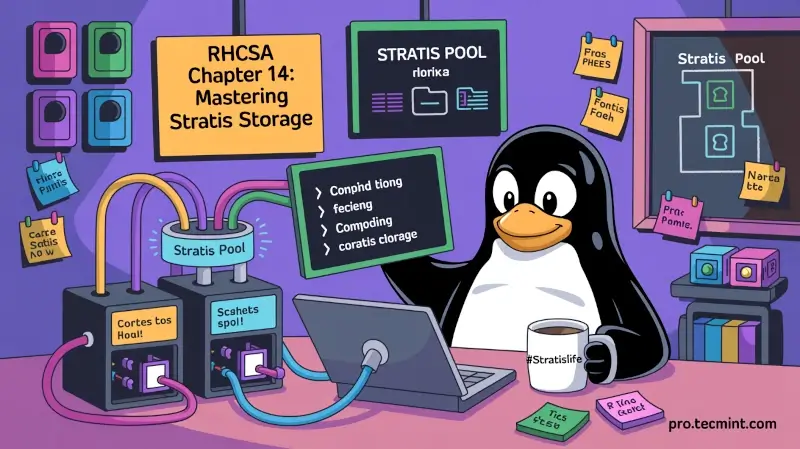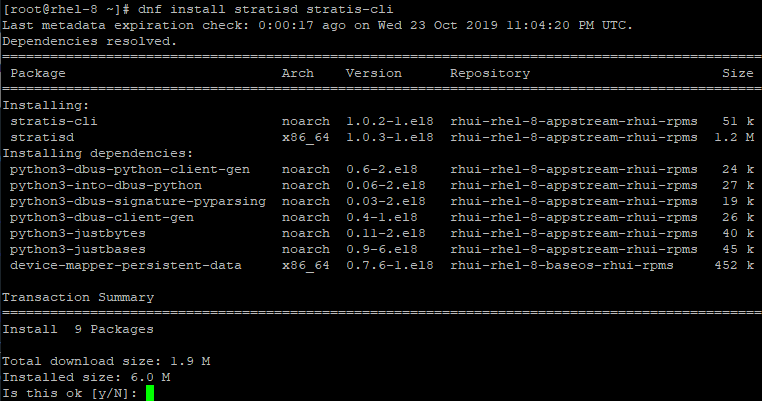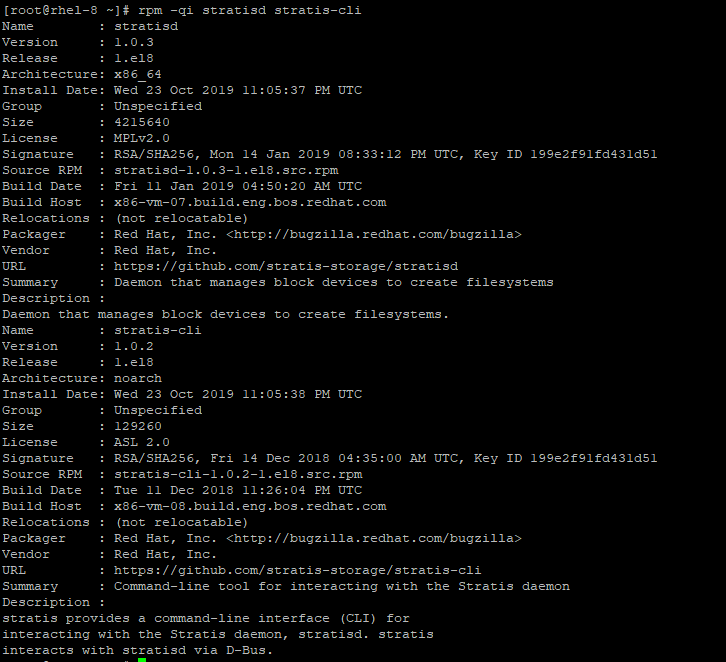Chapter #14: How to Install Stratis to Manage Layered Local Storage
In this chapter, you’ll learn how to install and configure Stratis on RHEL to manage local storage using pools, thin provisioning, and filesystems.

Stratis is one of the new features that ships with the RHEL distribution, which is a local storage management solution that focuses on simplicity and improved usability while at the same time providing access to advanced storage features.
It uses the XFS file system and grants you access to advanced storage capabilities such as:
- Thin provisioning
- File system snapshots
- Tiering
- Pool-based management
- Monitoring
Basically, Stratis is a storage pool that is created from one or more local disks or disk partitions, which helps a System administrator set up and manage complex storage configurations.
Before we proceed further, let us have a look at some of the technical terms you are bound to bump into as we go along:
- pool: A pool is made up of one or more block devices. The total size of the pool is equal to the sum total of the block devices.
- blockdev: As you might have guessed it this refers to block devices such as disk partitions.
- Filesystem: A filesystem is a thinly provisioned layer that does not come with a total fixed size. The filesystem’s actual size grows as data is added. Stratis automatically grows the size of the filesystem as the data size nears the virtual size of the filesystem.
Block devices that you can use with Stratis include:
- LVM Logical Volumes
- LUKS
- SSDs (Solid State Drives)
- Device Mapper Multipath
- iSCSI
- HDDs (Hard Disk Drives)
- mdraid
- NVMe storage devices
Software Components of Stratis
Stratis provides 2 software utilities:
- Stratis-cli: This is the command-line tool that ships with Stratis.
- Stratisd daemon: This is a daemon that creates and manages block devices and plays a role in providing a DBUS API.
Note: The stratisd daemon must always be running in the background for any Stratis-related commands to work successfully.How to Install Stratis on RHEL
Having looked at what Stratis is and defined a few terminologies. Let’s now install and configure Stratis on the RHEL distribution.
Let’s see how you can install Stratis on your RHEL system, log in as the root user, and run the command.
dnf install stratisd stratis-cli

To find more information about the installed packages, run the command.
rpm -qi stratisd stratis-cli

After the successful installation of Stratis, start the service and verify the status by running the commands.
systemctl enable --now stratisd
systemctl status stratisd
